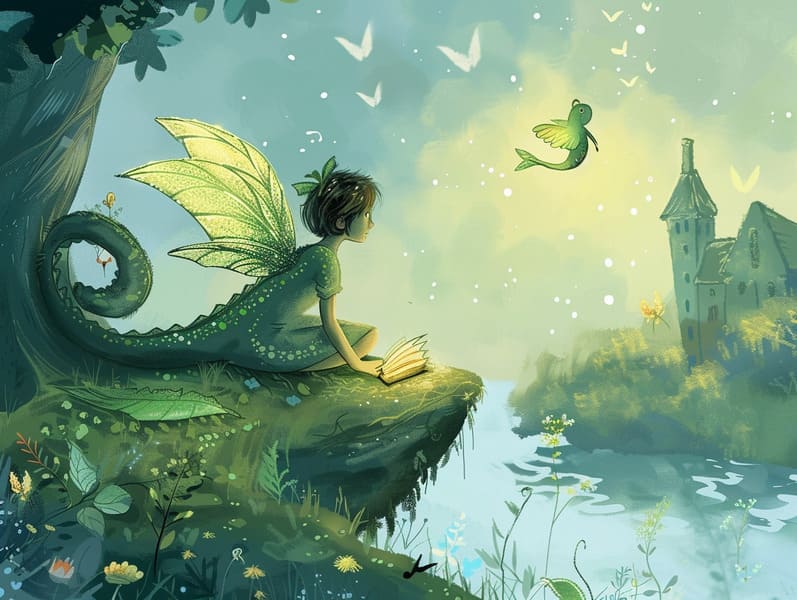Exploring the Roots of Historical Fairy Tales with Their Undying Wonder.
Exploring the Roots of Historical Fairy Tales with Their Undying Wonder.
Blog Article

Historical fairy tales have legendary status. These tales have been narrated from one generation to the next far before they were ever written down. They came from a variety of traditions, including Asian traditions. They were initially disseminated among mature audiences, often carrying themes and messages pertaining to the societal norms and beliefs of the time.
Jacob and Wilhelm Grimm, Jacob and Wilhelm Grimm, were among the first to collect and release many of these beloved stories. Their anthology, "Grimm's Children's Stories," included tales like "Cinderella," "The Story of Hansel and Gretel," and "The True Story of Snow White," which have since become essentials in the world of timeless fairy tales. Similarly, H. C. Andersen's enchanting fairy tales, such as "The Little Mermaid," and "The Story of the Ugly Duckling," have won hearts worldwide, guaranteeing their place in the pantheon of iconic fairy tales.
Despite their historical roots, classic fairy tales remain as meaningful as ever, especially as bedtime stories for kids. These enchanting tales are now available in diverse formats, including artistically illustrated books, charming animations, and digital storybooks.
Their unwavering allure can be attributed to several whimsical characteristics:
Key Lessons: Ancient fairy tales often teach important moral lessons. Narratives like "The Boy Who Cried Wolf" teach the benefit of truth, while "The Hare and the Tortoise" emphasize the traits of steadfastness and meekness. These stories offer the young clear distinctions between right and wrong, forming their moral compass in a gentle yet lasting way.
Empathy and Understanding: Timeless fairy tales frequently involve heroes facing struggles and tests, motivating audiences to relate with their struggles and boost their triumphs. For instance, "Beauty and Her Beast" highlights the importance of seeing beyond the surface to realize the real person of a being, enhancing insight and insight.
Cultural Knowledge: Many fairy tales are interwoven with the cultural contexts from which they arose. Reading these tales can provide illuminating insights into different ways of life, building a sense of global awareness and knowledge.
Imagination and Creativity: The extraordinary elements in traditional fairy tales—enchanted forests—enliven children’s creativity. These narratives transport readers to otherworldly realms, motivating inventive ideas and a sense of wonder that persists a lifetime.
Ancient fairy tales are not only bewitching but also didactic. They act as captivating tools in strengthening various mind and heart abilities in young readers. When timeless fairy tales are narrated, they cultivate language skills by bringing new language and complicated sentence structures. This practice here also advances listening abilities and attentiveness, as the young stay focused, enthusiastic to see what happens next.
Furthermore, contemplating the themes and characters of fairy tales can develop logical thinking and reasoning skills. Little ones are educated to see patterns, anticipate outcomes, and understand cause and effect. These talks also benefit young readers articulate their thoughts and feelings, strengthening their emotional intelligence.
In today’s technological era, the proliferation of internet fairy tales has made these stories more reachable than ever. Web-based platforms and online apps present wide arrays of old fairy tales that can be browsed or played anytime, anywhere. Fairy tales recited are particularly well-received, giving an fascinating method for young ones to engage with these mesmerizing stories. Sound books and read-to-me videos take characters and settings to life, often enhanced by mesmerizing harmonies and background music that elevate the narrative journey.
The timeless appeal of timeless fairy tales lies in their ability to modify to today's world while maintaining their basic principles. Contemporary takes of these tales often incorporate more representative figures and modern settings, making them understandable to today’s audience. However, the main ideas of valour, compassion, and even-handedness remain unchanged, continuing to reach kids of all ages.
Fairy tales also offer a sense of ease and knownness. They feature a well-structured narrative with a clear beginning, middle, and end, often winding up with the culmination of conflicts and the triumph of virtue over wickedness. This predictability can be placating for the young, affording a sense of sturdiness in an inconstant world.
Old fairy tales continue to allure and edify new generations, maintaining their appeal and meaningfulness in modern society. As bedtime stories for kids, they grant a perfect blend of wonder and wisdom, supporting moral values, empathy, and creativity. The prevalence of online storybooks and the favor of fairy tales recited make sure that these old fairy tales remain acquirable to new generations.
By perpetuating and distributing these narratives, we continue to exalt the rich tapestry of mythology and cultural heritage. Whether you are viewing a vibrantly illustrated book, exploring a internet library, or listening to an audiobook, the captivation of bedtime fairy tales is always within reach. These narratives illustrate of the unending strength of stories and its ability to bind us across generations and cultures.
Be it you are accessing a vibrantly illustrated book, seeing a internet library, or listening to an voice book, the appeal of timeless fairy tales is always within reach.
These tales point out of the perpetual presence of stories and its ability to bond us across centuries and lands, forming a connection that fascinates and enlightens alike.